Discouraged, we tracked down the local Barnes and Noble and sat in their café for several hours using the internet and escaping from the weather. The constant heat and humidity is really draining when you aren’t used to it.
Finally, we decided to move on to a state park where we would stay instead of the motel. On the way, we stopped at Jerry’s Drive-In since it had been recommended by every guidebook we’d read. The name is a bit of a misnomer, as it is really more of a diner than a drive-in, but the food lived up to the promises. For $8, we shared a double bacon cheeseburger, hush puppies, a beer, and a yummy banana shake. It was quite satisfying.
By the time we arrived at Big Lagoon State Park, it was after dark (which isn’t really that late given that the sun was setting at about 6:45). Much to our chagrin, we found a gate blocking access to the park and the camping. We scoured our maps and guidebooks for another nearby camping option to no avail. Eventually, Brian walked in past the gates to the ranger station where he found a phone number for the campground manager. Sarah called and talked to a very nice ranger who gave her the gate code and told her to come by the office and pay in the morning. Phew! That could have been a lot worse. It turns out that all Florida state parks close at sunset – that would have been a good detail for one of our guidebooks to mention.
There were plenty of campsites to choose from. We set up our tent and sat in the car listening to the second presidential debate on our satellite radio to avoid the bugs. Then we settled in for a night of pounding rain. Apparently the area hadn’t had rain in a month and then got five inches of it in two days.
When we got up in the morning, the skies actually looked reasonably promising. We went for a run around the lagoon, getting our brief tour of the park. We had barely gotten back to our campsite when suddenly the sky turned dark and opened up, soaking our half-disassembled tent. We hurriedly threw all the wet stuff in the car and decided we’d skip cooking breakfast.
On the way out of Big Lagoon State Park, we drove by the big naval base in town. The naval base has a free Naval Air Museum, so we decided to check it out. On the base we drove by the lighthouse just before the museum. It was closed, but we stopped and walked around the outside.

The Naval Air Museum was huge! We spent over three hours there and didn’t come close to seeing it all. First, we took a guided tour of the main museum. The museum is mostly run by volunteers, and the guides were no exception. Most were retired military personnel. The gentleman who gave our tour had over 2000 hours of volunteer service. He definitely knew his stuff and told a lot of interesting stories. He managed to fill over an hour and a half and was still going strong.
This plane was interesting for two reasons. First, look at the bungee cords around the wheels. Those were the plane’s shocks. Yikes! Also, note the positioning of the guns and the propeller. The guns had to be perfectly synchronized with the propeller so that they wouldn’t shoot the propeller off. Double yikes!
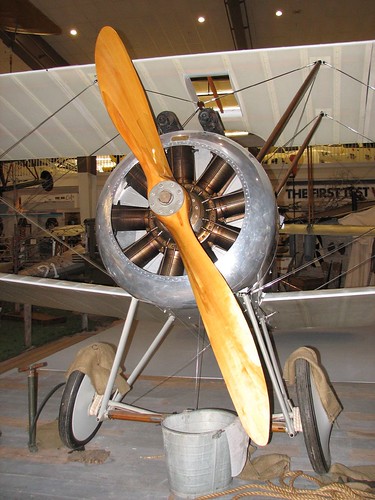
This plane was the first to make a transatlantic flight, which was in 1919.

The flight started with four of these amphibious planes attempting the crossing. Two of the planes ended up having to be cannibalized for parts to keep the other two planes going. One of the planes got lost. The fourth plane actually made it all the way across the Atlantic Ocean (albeit, with a couple of strategic stops along the way). The plane was then crated up and shipped back to the US.
Navigation in those days was an interesting proposition, usually accomplished with binoculars. Binoculars alone wouldn’t work for an ocean crossing, though, because of the lack of distinct features to serve as a guide. To solve this problem, the Navy positioned large boats at fifty-mile intervals all the way across the ocean.
A number of the planes in the museum, including these two, were restored after being raised from the bottom of the ocean or from Lake Michigan.
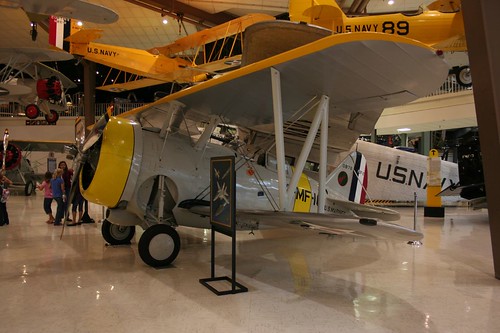

You might wonder why there were planes from Lake Michigan. In the WWII days, Lake Michigan was used as a training base to certify pilots for landing on aircraft carriers, which is said to be one of the most difficult tasks a pilot can perform. Combine the precision required with the young, inexperienced pilots, and you end up with over 300 planes at the bottom of Lake Michigan.
Moving along, we got to see some of the early planes that were used by the Blue Angels.
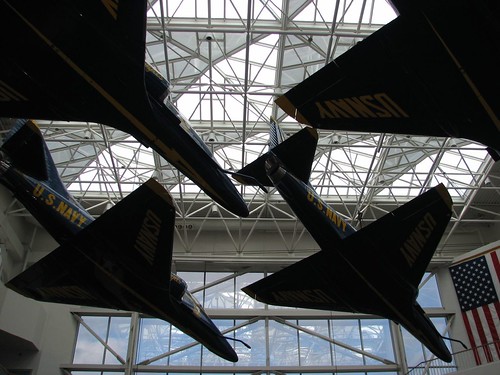
The Blue Angels are based in Pensacola and normally have practice sessions during the week that are free to the public, but they were out of town for a performance when we were there.
This plane was used as a training plane in WWII. Thousands of them were produced during the war. After the war, many of them were sold to Hollywood for use in war movies. They look similar enough to the Japanese Zeroes that with a new paint job they were hard to tell apart.
Other cool planes included this one, which has folding wings for ease of storage on an aircraft carrier.
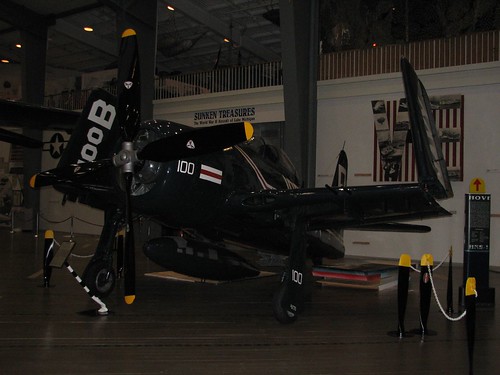
This plane was a Russian Mig.
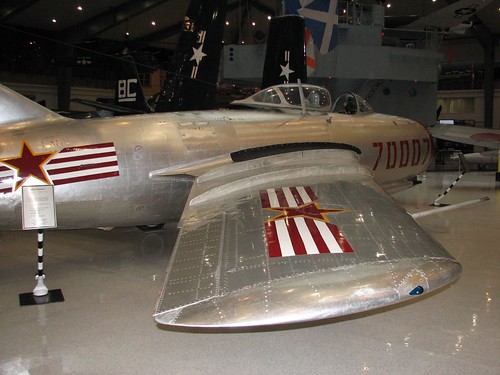
Outside, they had the Tomcat. This is the plane used in the movie, Top Gun.
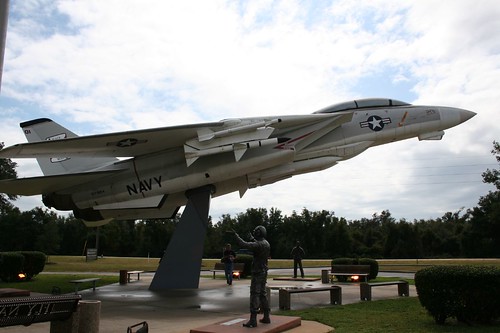
After our walking tour, we jumped on the trolley for the tour of the planes on the airstrip. There were dozens more planes stored there, all with various historical significance. Unfortunately, our tour guide for that tour talked a mile a minute so it was hard to really understand and absorb it all.
Having exhausted our enthusiasm for plane viewing for one day, we made our way back to downtown Pensacola and then eventually continued along the coast to Grayton Beach State Park. Grayton Beach was lauded by our guidebook as one of the most beautiful beaches in Florida and it didn’t disappoint. We got there just in time for a beach stroll at sunset.
The beach sits between two developed areas, Destin and Seaside, but is refreshingly undeveloped itself.
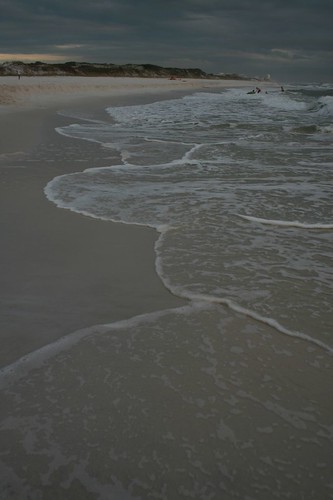
The beach was fine white sand bordered by dunes.
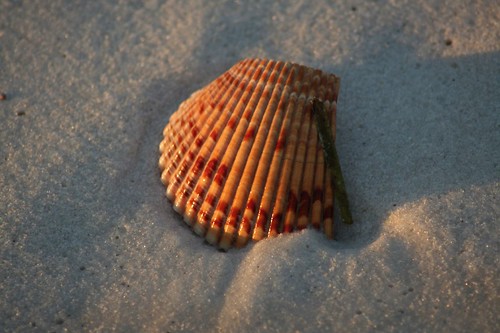
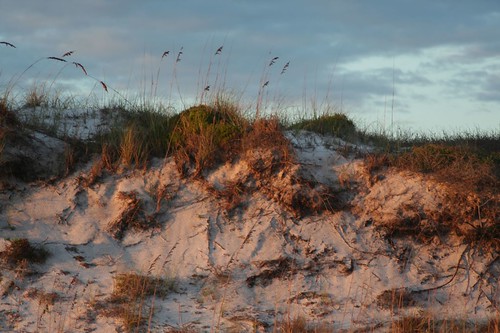
There were a number of little birds on the beach scurrying around. Sarah thinks they are plovers, but Brian disagrees.
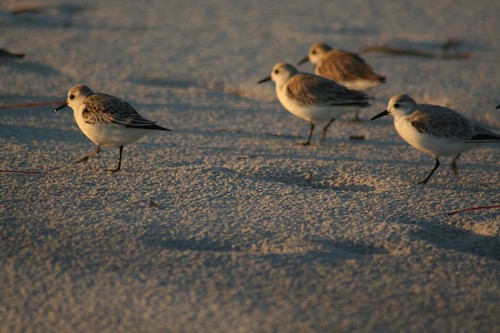
There was a blue heron standing in the surf that we watched for a while.

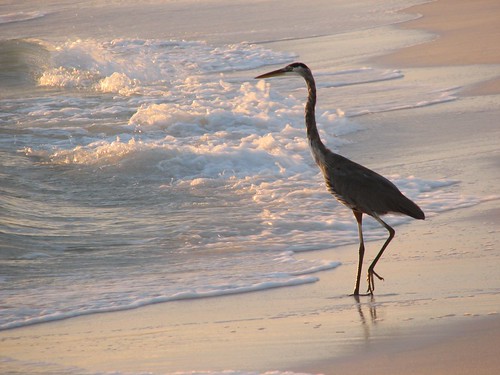
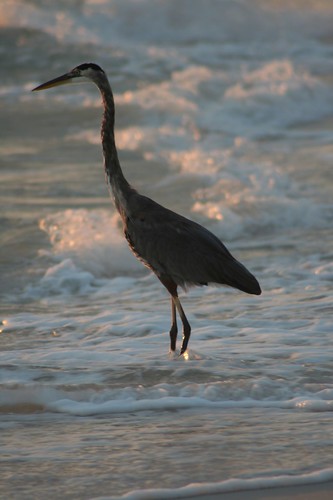
He was checking out a fishing lure that someone had left on the beach.
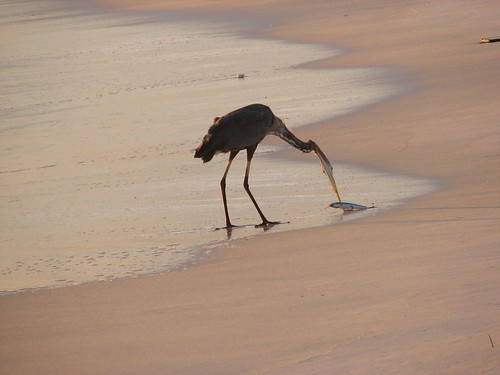
Here are Brian and Sarah enjoying the beach.
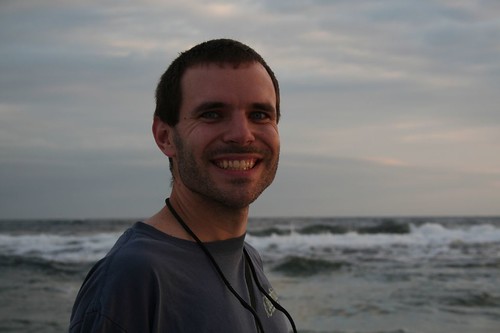
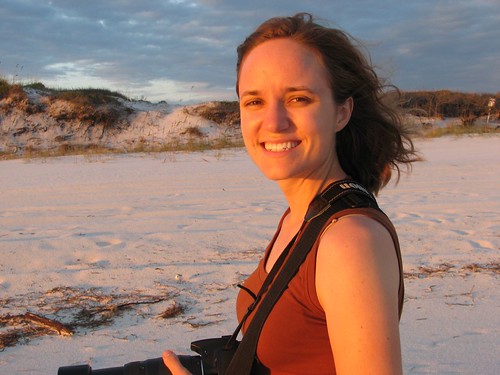
At this point, the heron had moved around to the dunes. He was surprisingly not skittish.
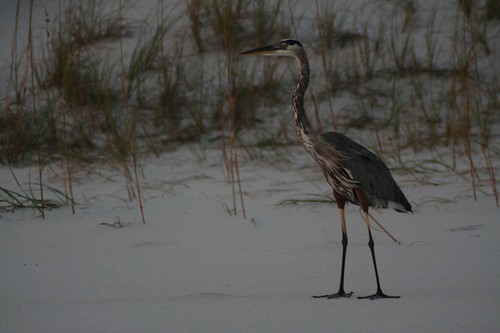
The beach was a lovely place to watch the sunset, with unimpeded views.
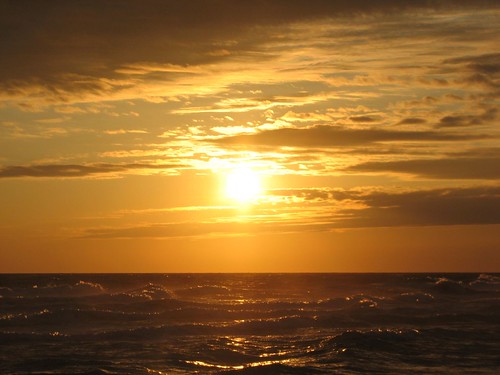
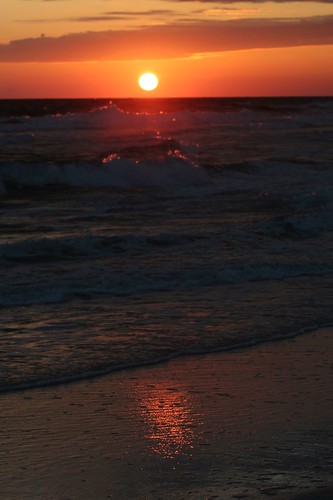

The colors on the clouds were quite beautiful.

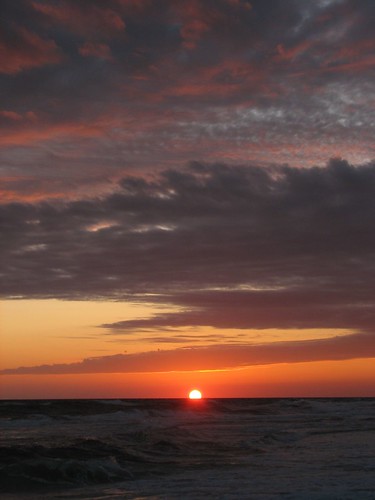
After sunset, we cooked our dinner under a picnic shelter since it had rained a lot in the last few days. Then we went back to our campsite, about a mile away.
The next morning, we went for a run on the beach. After hanging out at the park for a while longer, we continued the drive along the coast of the Panhandle. Next up was Seaside.
Seaside is a meticulous master-planned community that was built starting in 1981 and consists of adorable sherbet-colored houses. This town is so perfect-looking, in fact, that it was used as the set for the movie, The Truman Show. We could see why.
Continuing down the coast, we passed through Panama City and Port St. Joe without stopping much. We were staying at St. Joseph Peninsula State Park for the next two nights. When we arrived on the peninsula, we found ourselves in the Eastern Time zone for the first time since last Christmas.
The state park had a large campground with reasonable shade but one significant downfall – it was very buggy! I guess that’s what we get for coming to Florida this time of the year.
We were treated to another beach sunset, though this one wasn’t quite as stunning as the night before due to the lack of clouds.
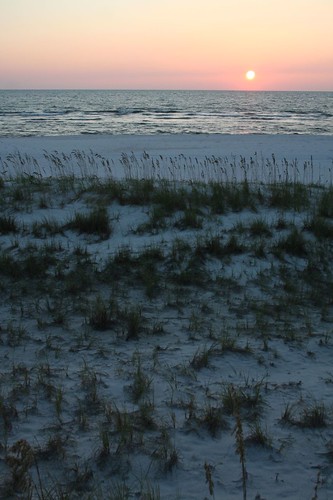
Here, Sarah checks out her sandy feet.

Sea oats lined the dunes along the beach.

The last seven miles of the peninsula are a nature preserve with no roads, so the next day, we went for a long walk down toward the preserve. There were tons of birds along the beach. Our favorites were the pelicans which were feeding. To fish, they’d fly up high then dive-bomb into the water. It was pretty funny to watch. We also saw a number of egrets. The tide was out, so we looked for shells as we walked. Eventually, the cloudy morning gave way to a clear afternoon and Brian decided it was too hot, so we turned around and went back to camp.
After St. Joseph Peninsula, our plan was to drive north toward Tallahassee and then spend several days paddling the Suwannee River (of the Stephen Foster song about the “Swanee River”). It supposed to be one of the best canoe trips in Florida, but we backed out fearing that the mosquitoes and other biting critters would make it miserable.
Instead, we continued driving along the coast. Along the way, we noticed that practically ever other house, or even more in some places, was for sale. There’s definitely no short of real estate on the market in Florida, which isn’t entirely surprisingly since Florida is one of the worst markets in the country right now. Many of the houses looked like they’d never been lived in. They lined mile upon mile of coastline, standing tall on cement pillars to avoid flood waters.
Next, we passed through Apalachicola, a cute historic fishing town that still has an active oyster fishing fleet. We walked around town and the waterfront and took pictures of the historic inn. The front porch looks like a lovely place to spend a warm afternoon.

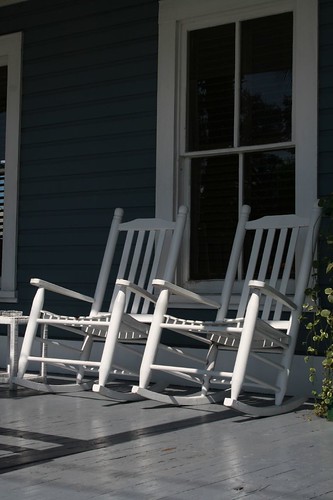
We also stopped in the Richard Biddle gallery. He’s a photojournalist that came to town for an assignment and never left. His work was mostly black-and-white shots showing the working waterfront and the people of the area. The photos were fascinating.
Back on the road, we stopped at a little fresh seafood stand and bought a pound of fresh shrimp. Yum!
For the evening, we decided to stop in Perry and stay in a hotel for a break from the weather. Sarah did laundry and then we watched the Red Sox vs. Tampa Bay game in the evening (well, for a while anyway – the game lasted over five hours).
On the morning of October 12, we hung out at the motel until checkout time, enjoying the air conditioning. Then we drove out to Cedar Key.
Cedar Key is a sleepy little island town that was once home to, of all things, a large pencil factory – the cedar wood apparently makes great pencils. The town has also supported itself with various other endeavors, including commercial fishing, acting as a seaport and rail terminal, and manufacturing products made from palm fronds. Over time, the cedar and timber resources of the island were overused and exploited, as were oysters. Also, functioning as a seaport became less viable as ships became larger. Today, the town supports itself on tourism and clam farming.
Our first stop on Cedar Key was the Cedar Key Museum State Park. The park had a room of displays about the area’s early history and collections of seashells from an early 1900s resident, St. Clair Whitman. The museum grounds also contained Whitman’s house which has been restored to look as it did in the 1920s and 1930s.

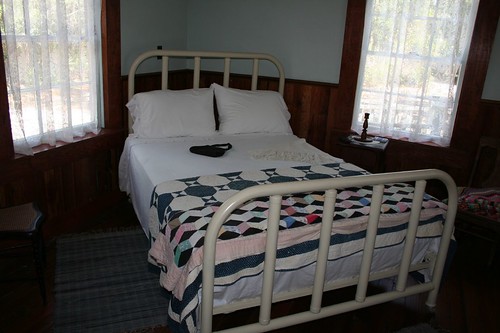


Behind the museum, there was a short walk out to the water.

Having dallied to make the most of the air conditioning at the museum in the mid-afternoon heat, we drove back into town and to the waterfront. There were a couple of ships in the harbor and a row of restaurants on stilts.

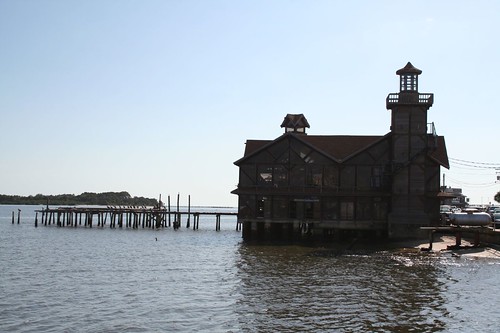
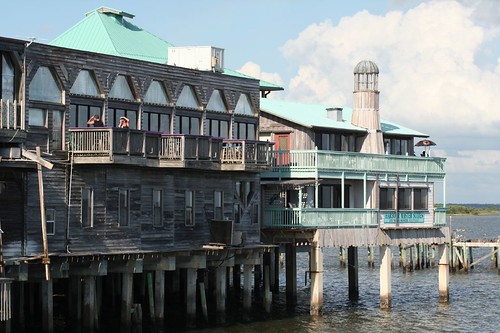
The primary attraction was bird watching. There were cool birds everywhere, including tons of pelicans.

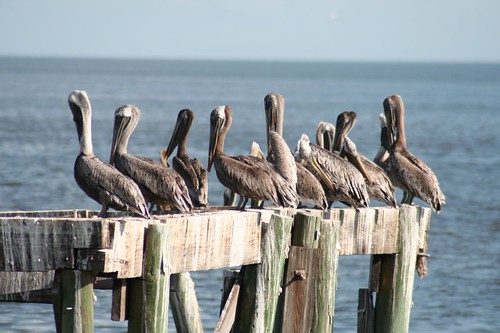

This bird had a fish in its mouth. We watched him juggle the flopping fish several times before finally losing it back into the water.

This egret was fishing under one of the docks in the marina.

Having explored the waterfront, we set up under a picnic shelter for a game of Scrabble. In a rare turn of events, Sarah was actually winning. Sadly, we had to stop before the game was finished because a storm came in and was blowing the pieces away. Sarah decided that we had made it far enough into the game that it was official, and she had won.
We spent the night at a private RV park on the island. The sites weren’t very big or nice and the no-see-ums were atrocious, but it was a fabulous spot to see the sunset.
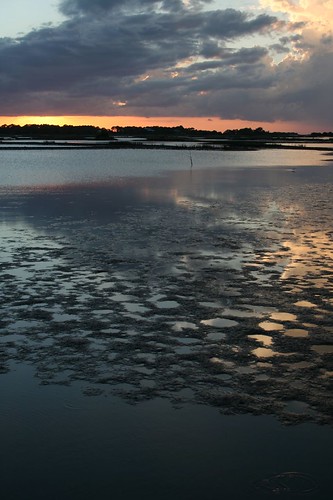
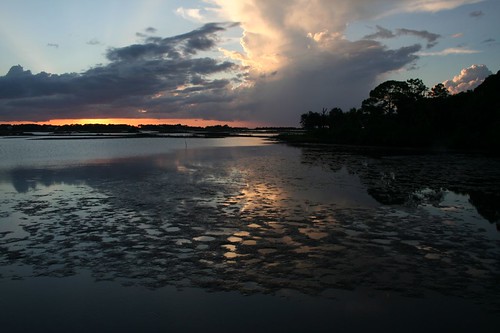


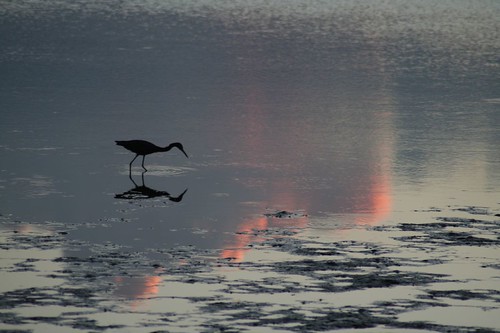
The next day, we’d continue away from the Florida Panhandle and down the Gulf Coast.
1 comment:
The small shorebirds in your picture are not plovers (sorry!); they're Sanderlings, a member of the sandpiper family.
Just happened to find your page and I'm a wildlife biologist who studies shorebirds, among other species!
Post a Comment